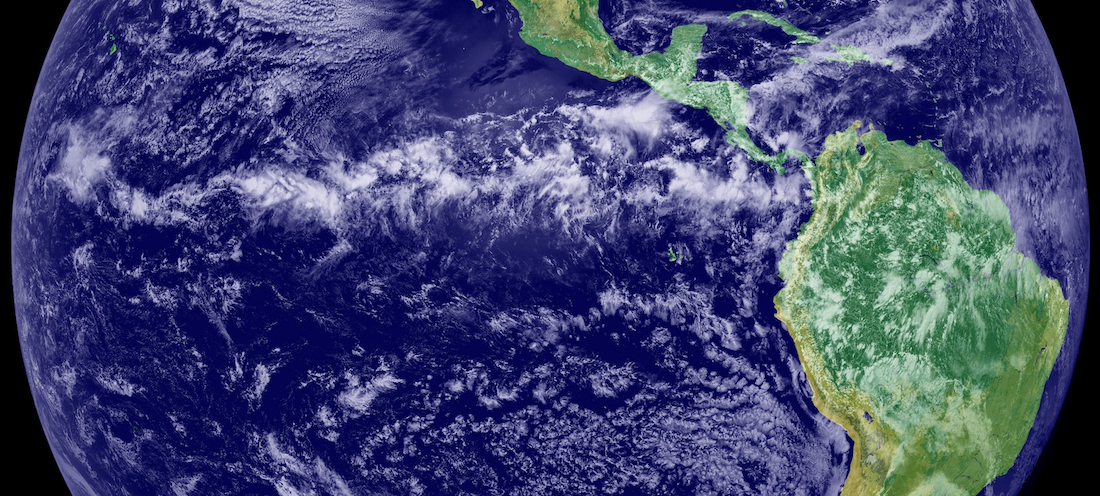Global Atmospheric Circulation and Climate
This course covers the general circulation of the atmosphere and its role in climate. This includes the phenomenology and mechanistic underpinnings of the Hadley circulation, jet stream, storm tracks, monsoons, El Niño, teleconnections, and cloud feedbacks. Fundamental concepts are introduced and then applied to understand circulation changes due to climate variability and greenhouse gas forcing.
Objectives
At the end of the course, students should be able to:
- explain the reasons for the existence and structure of the global atmospheric circulation
- identify and describe phenomena of the large-scale circulation in the troposphere and its coupling with the ocean, the stratosphere, and clouds
- apply the dynamical mechanisms and theoretical concepts learned in the course to predict how the global circulation will respond to changes in greenhouse gasses and other perturbations
Content
Hadley circulation, trade winds, jet stream, storm tracks, Rossby wave propagation, monsoons, stratosphere-troposphere coupling, Eliassen-Palm flux, global ocean circulation, El Niño-Southern Oscillation, tropical convection, cloud regimes, climate sensitivity, cloud and radiative feedbacks
Assessment
- Take-home problem sets (2): Meant as practice for the exam in a lower stakes setting, but will go into more technical detail than the exam. Collaboration with peers encouraged.
- In-class presentation: Takes place on April 17th or May 8th (12:15-14:00). This will be a 10-12-minute presentation (not including Q&A) in groups of 2, presenting on a single research paper from a provided list.
- Final written exam (90 minute): Takes place in class on May 22nd; no auxiliary material allowed.
- Grading: Final exam (50%), in-class presentation (30%), problem sets (20%)
Two-hour lectures on the following dates. Right column gives information about assignments, etc. Lecture notes will be posted before each class on the Moodle page. There may be some minor modifications to the schedule as the course progresses.
Course material will be drawn primarily from the following literature:
- Holton, J. R., & Hakim, G. J., 2013. An Introduction to Dynamic Meteorology. 5th Edition, Academic Press, Cambridge.
doi:10.1016/C2009-0-63394-8 (available to download with access through ETH Library) - Wallace, J., Battisti, D., Thompson, D., & Hartmann, D., 2023. The Atmospheric General Circulation. Cambridge: Cambridge University Press. doi:10.1017/9781108563857 (available to read online through ETH Library)
- Vallis, G., 2019. Essentials of Atmospheric and Oceanic Dynamics. Cambridge University Press. doi:10.1017/9781107588431 (available to read online through ETH Library)
Other relevant references include:
- Held, I. M., and GFD/2000 Fellows, 2000. The General Circulation of the Atmosphere. Proceedings of the Woods Hole Oceanographic Institution Program in Geophysical Fluid Dynamics, external page https://www.gfdl.noaa.gov/wp-content/uploads/files/user_files/ih/lectures/woods_hole.pdf.
- Siebesma, A., Bony, S., Jakob, C., & Stevens, B. (Eds.), 2020. Clouds and Climate: Climate Science's Greatest Challenge. Cambridge University Press. doi:10.1017/9781107447738 (available to read online through ETH Library)
